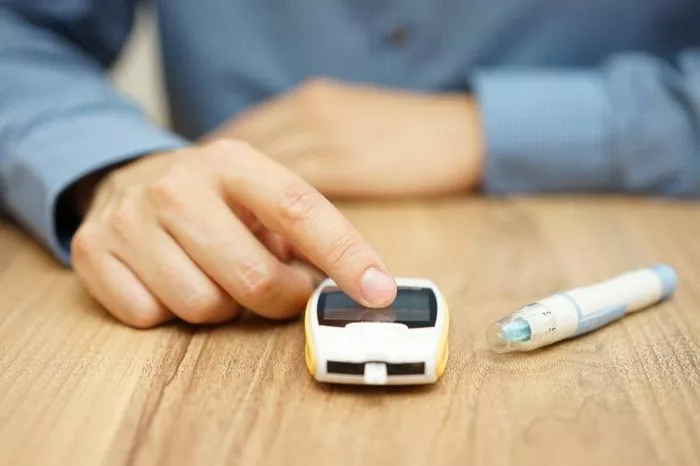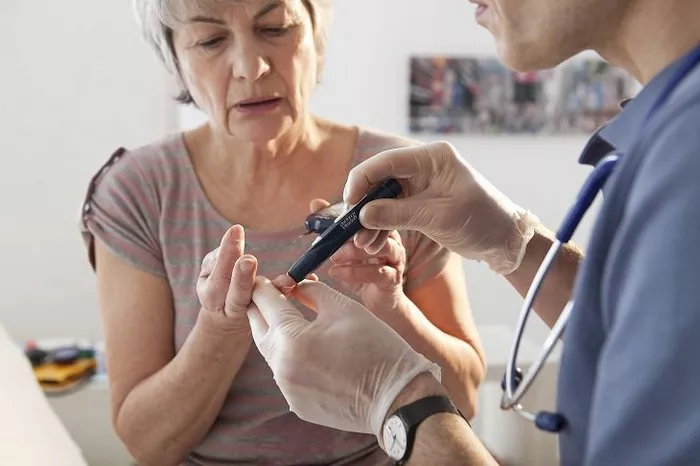Increased Thirst and Frequent Urination
One of the most common and early signs of hyperglycemia is increased thirst, known medically as polydipsia. When blood sugar levels are elevated, the kidneys work harder to filter and absorb the excess glucose. This process draws more fluid from the body, leading to increased urination, or polyuria. As a result, the body becomes dehydrated, triggering an intense thirst to replenish lost fluids.
Pathophysiology: The kidneys filter glucose from the blood, and when glucose levels exceed the renal threshold (approximately 180 mg/dL), it spills into the urine, taking water with it. This osmotic diuresis leads to significant fluid loss and dehydration, which the body attempts to counteract by inducing thirst.
Clinical Implications: Persistent polydipsia and polyuria can lead to severe dehydration and electrolyte imbalances. These symptoms are often more pronounced in uncontrolled diabetes and can be exacerbated by infections or other stressors.
Fatigue and Weakness
Chronic fatigue and a general feeling of weakness are significant indicators of hyperglycemia. When the body cannot effectively use glucose for energy, cells are starved of this critical fuel. Despite having high levels of glucose in the blood, the energy production inside cells is impaired, leading to feelings of exhaustion.
Mechanism: Insulin is essential for glucose uptake into cells. In hyperglycemia, either due to insulin resistance or insufficient insulin production, glucose remains in the bloodstream and is not adequately utilized by the body’s cells. Consequently, the cells switch to alternative, less efficient energy sources, leading to fatigue.
Clinical Perspective: Fatigue in diabetes can be multifactorial, including anemia, depression, or thyroid dysfunction. Therefore, a thorough assessment is necessary to differentiate the causes and manage them effectively.
Blurred Vision
Blurred vision is another hallmark sign of hyperglycemia. Elevated blood glucose levels cause changes in the shape and flexibility of the lens of the eye. This leads to an inability to focus properly, causing vision to become blurry.
Biological Explanation: High glucose levels in the blood lead to osmotic changes that affect the lens. Glucose is converted to sorbitol in the lens, causing water to be drawn in and leading to lens swelling. This distorts vision until blood sugar levels are brought under control.
Importance in Diabetes Management: Persistent blurred vision should not be ignored as it can indicate prolonged hyperglycemia, which, if left unmanaged, can lead to more serious complications like diabetic retinopathy. Regular eye exams are crucial for early detection and prevention of diabetes-related vision problems.
Slow Healing of Cuts and Wounds
Hyperglycemia impairs the body’s ability to heal wounds. Elevated blood sugar levels can damage nerves (diabetic neuropathy) and impair blood circulation, which slows the healing process and increases the risk of infections.
Pathophysiology: High glucose levels lead to glycation of proteins, impairing the normal function of the immune system and blood vessels. This glycation affects white blood cell function, reducing the body’s ability to fight infections and heal wounds. Additionally, poor blood flow due to damaged blood vessels means less oxygen and nutrients are delivered to the wound site, further delaying healing.
Clinical Relevance: Slow-healing wounds are a serious concern in diabetic patients as they can lead to infections, ulcers, and, in severe cases, amputations. Proper foot care, regular monitoring, and prompt treatment of any cuts or wounds are essential components of diabetes management.
Unexplained Weight Loss
Unintended weight loss is a less common but significant sign of hyperglycemia. This occurs when the body, unable to use glucose for energy, starts breaking down fat and muscle tissue instead.
Biochemical Mechanism: When insulin is insufficient or ineffective, glucose cannot enter cells, and the body starts breaking down fat stores and muscle tissue to obtain energy. This catabolic state leads to weight loss despite normal or increased appetite.
Clinical Importance: Unexplained weight loss in a diabetic patient warrants immediate medical attention. It often indicates poor glycemic control and necessitates a reassessment of the patient’s diabetes management plan, including medication adjustments and lifestyle modifications.
See also: Why Does Infection Cause Hyperglycemia?
Conclusion
Recognizing the signs of hyperglycemia is crucial for timely intervention and prevention of complications associated with diabetes. Increased thirst and urination, fatigue, blurred vision, slow wound healing, and unexplained weight loss are significant indicators that should prompt further investigation and management. Regular monitoring of blood glucose levels, adherence to prescribed treatments, and lifestyle modifications are essential strategies in managing hyperglycemia and maintaining overall health. If you or someone you know is experiencing these symptoms, it is important to seek medical advice to ensure appropriate care and management of blood sugar levels.
Related topics:
What Is Steroid Induced Hyperglycemia
What’s the Relationship Between Glucocorticoids and Hyperglycemia

























